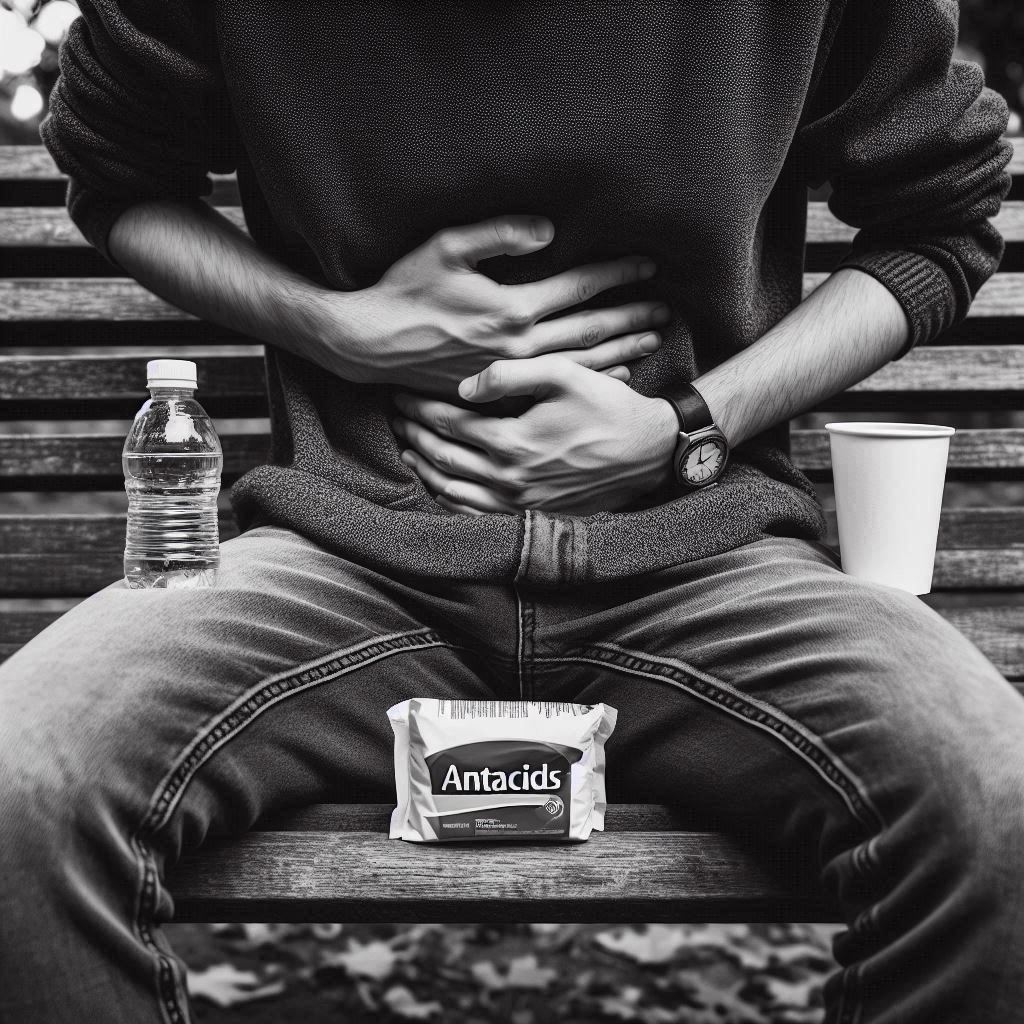Hot weather doesn’t just cause discomfort; it can also intensify anxiety symptoms, leaving you feeling overwhelmed and uneasy. This post explores the intricate relationship between anxiety and heat intolerance, shedding light on why rising temperatures can trigger anxiety spikes. Here, you’ll find insights into managing this unwelcome response, helping you enjoy the warm months without unnecessary stress.
Understanding Anxiety and Heat Intolerance
Ever noticed how scorching summer days can make your anxiety skyrocket? You’re not alone. Hot weather doesn’t just cause discomfort; it can also intensify anxiety symptoms, leaving you feeling overwhelmed and uneasy. This post explores the intricate relationship between anxiety and heat intolerance, shedding light on why rising temperatures can trigger anxiety spikes. Here, you’ll find insights into managing this unwelcome response, helping you enjoy the warm months without unnecessary stress.
What is Anxiety?
Anxiety is a feeling of worry, nervousness, or unease about something with an uncertain outcome. It’s normal to feel anxious occasionally, especially when facing stress. However, for some people, anxiety becomes a constant and overwhelming part of life. Common symptoms of anxiety include:
- Restlessness: Feeling on edge or irritable.
- Excessive Worry: Overthinking everyday situations.
- Fatigue: Feeling tired despite getting enough sleep.
- Difficulty Concentrating: Trouble focusing on tasks.
- Physical Symptoms: Increased heart rate, sweating, trembling, or dizziness.
Anxiety can strike anytime and can be debilitating if left unchecked. It’s essential to recognize these symptoms and seek help if they become overwhelming.
What is Heat Intolerance?
Heat intolerance is when your body can’t regulate its temperature effectively in warm environments. Unlike the typical discomfort most people feel in the heat, those with heat intolerance experience more severe symptoms, such as:
- Excessive Sweating: Even in mild temperatures.
- Flushed Skin: Red, hot skin that indicates overheating.
- Rapid Heartbeat: Feeling your heart race.
- Nausea or Headache: Feeling queasy or experiencing headaches when hot.
- Intense Fatigue or Weakness: Feeling extremely tired or weak.
Heat intolerance differs from the usual response to heat. While most people adjust to higher temperatures, those with heat intolerance may find it unbearable and experience symptoms much more quickly. This can make hot weather particularly challenging, especially when combined with anxiety.
Understanding the Connection
It’s essential to understand the connection between anxiety and heat intolerance to manage both effectively. Anxiety can increase your body’s stress response, making you more susceptible to heat intolerance. Conversely, heat intolerance can elevate anxiety levels, creating a challenging cycle.
Recognizing the symptoms and learning how to manage them can empower you to take control of your well-being. Stay tuned as we explore more strategies and insights to help you cope.
The Link Between Heat Intolerance and Anxiety
Hot weather can do more than just leave you sweaty and tired. It can also ramp up anxiety levels, making distress and discomfort even harder to handle. Whether it’s due to physiological changes or the way our body’s stress system responds to heat, understanding this connection can be crucial in managing anxiety during the summer months.
Physiological Responses to Heat
Your body has several ways to deal with heat. When temperatures rise, your body tries to cool down by sweating and increasing blood flow to the skin. These natural responses are meant to help you stay cool, but they can also mimic symptoms of anxiety.
- Sweating and Rapid Heart Rate: Sweating helps cool the body, but it can also feel like a panic attack symptom. A racing heart, meant to pump blood faster to cool you down, can be mistaken for anxiety.
- Increased Breathing: As your body temperature rises, you might breathe more rapidly. This increased breathing can sometimes be confused with hyperventilation, a common symptom of anxiety.
- Dizziness and Fatigue: Feeling dizzy or exhausted in the heat? These are normal responses but can feel very similar to the fatigue and light-headedness often experienced with anxiety.
When these physical reactions happen, they can easily be interpreted as anxiety symptoms, creating a feedback loop that intensifies the feeling of panic.
Cortisol and Stress Response
Cortisol, often known as the stress hormone, plays a big role in how our body responds to anxiety. When you’re exposed to high heat, your body produces more cortisol, thinking it’s under stress. This hormone increase can contribute to anxiety.
- Effects of Elevated Cortisol: High levels of cortisol can lead to feelings of anxiety, restlessness, and agitation. When the weather is hot, your body’s stress response is on high alert, which can make existing anxiety worse.
- Why It Matters: Understanding the role of cortisol can help you find ways to mitigate its effects. Knowing that heat can increase this hormone might encourage you to focus on stress-reducing activities like deep breathing, staying hydrated, or taking breaks from the sun.
Common Triggers of Heat-Induced Anxiety
Certain factors can trigger heat-induced anxiety. Here are some common triggers to keep in mind, especially during those hot summer days:
- Dehydration: Not drinking enough water can lead to dehydration, which amplifies anxiety symptoms. Make sure to stay hydrated throughout the day.
- Sun Exposure: Prolonged exposure to the sun can increase body temperature and sunburn, both of which can exacerbate feelings of anxiety.
- Crowded Spaces: Being in crowded places during hot weather can make it feel even hotter and more overwhelming, particularly if you’re already prone to anxiety.
- Physical Exertion: Exercise and physical activity in the heat can elevate your heart rate and body temperature, mimicking anxiety symptoms.
Understanding these triggers can help you take preventative measures. For example, drinking plenty of water, seeking shade, and taking breaks can all mitigate the effects of heat-related anxiety.
Managing anxiety during hot weather means recognizing these triggers and physiological responses. By staying informed and prepared, you can take control of your mental well-being and enjoy the summer season with less stress. Keep exploring this article for more tips on how to cope!
Symptoms of Heat-Induced Anxiety
When the temperature soars, many people feel their anxiety levels rise too. Heat-induced anxiety occurs when the body’s response to high temperatures triggers or exacerbates anxious feelings. Recognizing both physical and psychological symptoms can help you manage and mitigate these effects.
Physical Symptoms
Heat-induced anxiety often manifests through the body, mimicking the physical symptoms of panic and distress. These symptoms can include:
Heart Palpitations: When it’s hot, your heart tends to beat faster to help cool you down. This can feel like your heart is racing or pounding, often mistaken for anxiety attacks.
Sweating: One of the body’s natural cooling mechanisms involves sweating. However, excessive sweating can feel overwhelming and lead to self-consciousness, ramping up feelings of anxiety.
Shortness of Breath: As the body heats up, you might find yourself taking quick, shallow breaths. This can create a sensation similar to hyperventilation, adding to anxiety.
Dizziness: The risk of dehydration and heat exhaustion increases with high temperatures, leading to dizziness or feeling light-headed, which are common physical aspects of anxiety.
Fatigue: Extreme tiredness often accompanies high heat, making it hard to carry out normal activities. This can amplify feelings of anxiety due to a lack of energy and motivation.
When these physical signs surface, they can easily trigger or heighten anxiety, making it important to understand their connection to heat.
Psychological Symptoms
The mental toll of heat cannot be understated. Psychological symptoms of heat-induced anxiety include:
Increased Irritability: Hot weather can result in irritability from physical discomfort. This crankiness stems from disrupted routines and general discomfort, potentially leading to anxious thoughts.
Difficulty Concentrating: High temperatures can make focusing on tasks nearly impossible. This scatterbrained feeling can increase stress and anxiety levels, especially if important tasks are affected.
Restlessness: Feeling on edge is common when you’re overheated. You might have trouble sitting still or feel an urgent need to cool down, which can feed into anxiety.
Mood Swings: Emotional lows and highs can become more pronounced during heatwaves. One moment you may feel optimistic; the next, the heat might pull you into feelings of frustration and helplessness.
Understanding these psychological responses helps in recognizing heat-induced anxiety. By identifying the source, you can take steps to keep your cool both physically and mentally.
Recognizing both the physical and mental symptoms of heat-induced anxiety is key to managing your overall well-being during the hotter months. Whether it’s deep breathing exercises or finding a cooler environment, understanding these signs can help you stay calm and collected, even when the heat is on.
Managing Heat Intolerance and Anxiety
Managing heat intolerance and anxiety can be challenging, especially during the hot summer months. By implementing the right strategies, you can minimize their impact on your daily life. Let’s explore some practical methods.
Staying Hydrated
Hydration is essential for managing both heat intolerance and anxiety. Without enough water, your body struggles to regulate its temperature, making you more susceptible to overheating. Dehydration can also increase anxiety symptoms, leading to irritability and restlessness.
- Drink Water Regularly: Aim for 8-10 glasses of water each day. If you’re active or outside in the heat, you may need more.
- Avoid Dehydrating Beverages: Limit your intake of alcohol, caffeine, and sugary drinks, as they can dehydrate your body.
- Monitor Your Urine: A light yellow color indicates good hydration. Darker urine may mean you need to drink more water.
Avoiding Direct Sunlight
Staying out of direct sunlight can help keep your body temperature down and reduce anxiety. Here are some tips to stay cool:
- Seek Shade: Stay in shaded areas whenever possible, especially during peak sunlight hours (10 a.m. to 4 p.m.).
- Wear Protective Clothing: Light-colored, loose-fitting clothes and wide-brimmed hats can help protect you from the sun’s rays.
- Use UV Protection: Apply sunscreen with at least SPF 30 to exposed skin to prevent sunburn, which can increase body temperature.
Using Cooling Techniques
Practical cooling techniques can significantly help manage heat intolerance. Simple methods to stay cool include:
- Use Fans: Portable fans or ceiling fans can provide a continuous breeze that helps lower your body temperature.
- Cold Packs: Applying cold packs or damp cloths to your wrists, neck, and forehead can quickly cool you down.
- Cool Showers: Taking a cool shower can lower your core body temperature and reduce heat-related discomfort.
Mindfulness and Relaxation Techniques
Anxiety can feel overwhelming, but mindfulness and relaxation techniques can offer relief. These practices help calm your mind and body.
- Deep Breathing Exercises: Slowly breathe in through your nose and out through your mouth. This helps reduce stress and anxiety.
- Progressive Muscle Relaxation: Tense and then slowly release each muscle group in your body, starting from your toes and moving upwards.
- Mindfulness Meditation: Spend a few minutes each day focusing on the present moment. Use guided mindfulness apps if needed.
- Yoga: Gentle yoga stretches can help relax your body and mind. It also promotes effective breathing techniques.
Implementing these strategies can help you manage heat intolerance and anxiety more effectively. Continue exploring other methods in this post to improve your overall well-being during the warmer months.
When to Seek Professional Help
Feeling anxious and overwhelmed during hot weather is not uncommon. For some people, managing anxiety and heat intolerance on their own may be enough. However, there are times when seeking professional help becomes crucial.
Recognizing Severe Symptoms
Recognizing when anxiety and heat intolerance symptoms are severe enough for professional help can be life-saving. It’s important to listen to your body and mind and seek help if you notice the following:
- Persistent Anxiety: If you find that your anxiety doesn’t lessen even after the weather cools down, or it becomes a constant part of your life, it might be time to seek help.
- Increased Heart Rate: A rapidly beating heart that doesn’t slow down even in cooler environments is a warning sign.
- Extreme Sweating: If you experience excessive sweating even in mild temperatures, it could indicate a deeper issue.
- Mental Confusion or Distress: Feeling confused, distressed, or disoriented when it’s hot can be a sign that you need to consult a professional.
- Physical Symptoms: Persistent headaches, nausea, dizziness, and shortness of breath should not be ignored.
- Fainting: Passing out or feeling like you might faint is a clear indicator that it’s time to see a doctor.
The key is to distinguish between typical hot weather discomfort and symptoms that could indicate something more serious. If in doubt, consult with a healthcare professional to ensure you’re taking appropriate steps for your health.
Therapies and Treatments
Various therapies and treatments can help manage anxiety and heat intolerance. Understanding your options empowers you to make informed decisions about your health.
- Cognitive Behavioral Therapy (CBT): CBT is one of the most effective treatments for anxiety. It helps you understand and change thinking patterns that lead to anxious feelings.
- Medications: Sometimes, medications such as antidepressants or anti-anxiety drugs are necessary to manage symptoms. Always consult with a doctor before starting any medication.
- Heat Intolerance Treatment: Medical professionals can help identify the underlying causes of heat intolerance. Treatments might include lifestyle changes, hydration strategies, cooling techniques like vests and wraps, and medication adjustments.
- Mindfulness Practices: Techniques such as meditation, yoga, and deep breathing can help reduce anxiety by promoting relaxation.
- Biofeedback Therapy: This therapy helps you become aware of bodily functions like heart rate and muscle tension, teaching you how to control them to reduce anxiety.
- Support Groups: Joining a support group can provide emotional comfort and practical advice for managing anxiety and heat intolerance.
- Nutritional Guidance: Proper nutrition can impact your reaction to both heat and stress. A dietitian can help you design a plan that supports your overall health.
Managing anxiety and heat intolerance involves a holistic approach, including psychological support, medical treatments, and practical lifestyle changes. By seeking professional help, you take a crucial step toward regaining control and enjoying life, even in the face of anxiety and heat.
Conclusion
Understanding the link between anxiety and heat intolerance is crucial for managing both effectively. Hot weather can significantly impact mental well-being, exacerbating anxiety symptoms through physiological and psychological responses. Recognizing this connection helps in taking proactive measures to mitigate discomfort.
Stay hydrated, avoid direct sunlight, and use cooling techniques to prevent heat-related anxiety. Mindfulness and relaxation techniques can offer relief, allowing you to stay calm and composed even during heatwaves.
Managing both anxiety and heat intolerance requires awareness and intentional actions. Prioritize your mental and physical health to enjoy summer months with less stress. Take control and implement the strategies discussed to improve your overall well-being.








